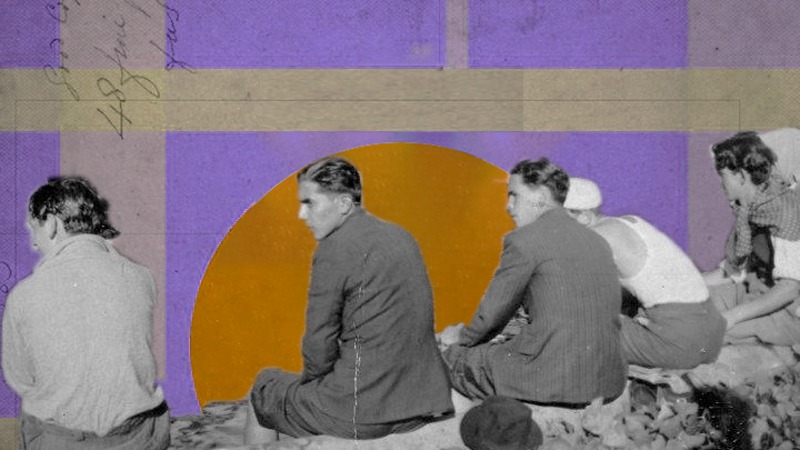
From LID History They suggested that I write for the series “The Cita” in reference to what was the October 17 in Argentina. Without hesitation I went to look for it in the book of Daniel James: Resistance and integration, who dedicated much of his life to studying the workers of Berisso. There I found a record of the protesters that the October 17 As they passed through the elegant neighborhoods, they shouted: “Get off the corner, crazy oligarch, your mother doesn’t love you and neither does Perón!”
The phrase that gives the title to his book summarizes the tensions contained in the mobilization of the October 17, 1945: resistance and integration. In this short text we want to recover those contradictions in a city that James investigated for four decades: Berissoknown as “point zero of Peronism”, from where the largest columns emerged that marched towards Plaza de Mayo.
When writing about this date, we encounter an event crossed by different paradoxes. Peronism, relying on the tradition of struggle of the Argentine labor movement, was based on this enormous mobilization that to this day is commemorated as “Loyalty Day.” But that same political movement was, and continues to be, the one that seeks to never again will there be an October 17 in the profound sense that it had: an explosion of the working class breaking into the public scene outside the institutional margins. Let’s look at the different paradoxes that arise from this date.
First paradox: from the plebeian party to “from work to home”
Daniel James suggests that the Peronism of those years managed to mobilize the workers denying the liberal separation between politics and civil society. Citizenship began to be redefined based on its social dimension, work. The working class saw Perón’s drive for industrial development a vital role for itself as a political agent.
The workers mobilized on October 17 showed their ability to act in defense of what they considered their interests. Although the immediate objective was the release of Perón, the mobilization went beyond all slogans and even the union leaders themselves since the labor leaders had set a national strike for the 18th, but the people went on strike on the 17th. The collective action put the working class on stage as a political subject, weighing its strength against the arrest of Perón and against the attempt of the landowners and the bourgeoisie to reverse the conquests social events of previous years. The workers saw at risk not only their political leader but also many social and economic achievements for which they had been fighting for many years before Perón’s arrival. Thus, with the general strike and the occupation of the city, a reactionary attempt by the ruling classes was defeated.
For the first time, the Plaza de Mayo was filled with workers, a square that until then had only been populated by “people with ties.” The workers gathered in the Plaza leaving the suburbs, and as they passed through the poorest neighborhoods of the city of Buenos Aires. In line with the chosen phrase, many authors agree that this mobilization had a tone of irreverencewhich Félix Luna summarized as a big party with murga and candombe. We could say that it was a commoner party.
In this lies the first paradox, the workers showed their potential as a political subject in Argentine society, but from that fact Peronism condemned them to be the backbone of a movement that obeyed the head of a leader with a bourgeois-institutional project. It was that irreverence and contentious capacity that the working class demonstrated on October 17, which Peronism later sought to eradicate. Perón himself raised concerns about the “disorganized masses”, so for him unions should act largely as instruments of the State to mobilize and control workers, hence the famous “from home to work and from work to home” arises.

Second paradox: the story around kilometer zero of Peronism sought to erase the previous traditions that made it possible
Berissothe call “kilometer zero of Peronism”was one of the epicenters of that mobilization. According to the accounts of the time, the southern zone contributed almost 50% of the attendees to the Plaza de Mayo. This port and immigrant city revolved its life around the meat processing plants installed since 1907. More than just workplaces, these were spaces of sociability and culture. During the first decades of the 20th century, the creation of mutual societies, choirs, clubs, bars and tenements proliferated, giving shape to a supportive and combative community. On New York Street in Berisso, the first strikes were forged, among which were those of October 1917, influenced by the winds of the Russian Revolution. In this mobilization, Swift and Armor workers demanded better wages, a maximum 8-hour day, and organized a union. This heroic day had injuries and deaths. However, Peronism later sought to erase them from workers’ memory, under the argument that Berisso began with the mobilization of 1945.
The enormous working-class column of Berisso is founded on this tradition, particularly of communists, socialists and anarchists who had a great presence in the Berisso meat processing plants and, therefore, were constitutive of the DNA of that working-class culture of Berisso. As stated by Daniel James and Mirta Lobato, the leaders of the timber strikes in 1935, and the construction struggle committee in 1936, worker leaders emerged, many of whom were from the Labor Party such as Cipriano Reyes and María Roldán, but others linked to the Communist Party such as José Peter also emerged. By this we mean that despite the overshadowing of collective memory, these events were crucial in the local workers’ identity and culture, in their demands regarding work, in the fight against employer injustices, in trust in collective action, and in building ties and forms of organization among workers.
These trends of city of Berissohad their correlation with the national trends of the 1930s towards the trend of industrial unions. The infamous decade was very recent in the memory of the workers: the harshness of the working conditions had left deep marks. In the words of Cipriano Reyes, “the company owned the lives and property of its workers.” The fear of unemployment coexisted with daily humiliation. However, during those years the working class was forging a militant worker culture, with unions, athenaeums, libraries and newspapers that cultivated solidarity among workers and an awareness of their class interests. In this, as Daniel James and Hernan Camarero develop, communist organizations were of great importance, among which was Jose Peter in Berisso. As Alicia Rojo, Josefina Luzuriaga, Walter Moretti and Diego Lotito state in the book One hundred years of workers’ history in Argentina 1870-1969it was against this organizational trend and due to the weight of the Communist Party in the industrial unions, that Perón responded with a channeling policy.

As Daniel James states in Resistance and integration, Later, Peronism in power sought to institutionalize and control this heretical challenge that had been unleashed within a new orthodoxy sponsored by the State. In the words of Perón: “we seek to suppress the class struggle by supplanting it with a fair agreement between workers and bosses under the protection of justice emanating from the State.” The third and greatest paradox of October 17 is that Peronism boasts of a mobilization that it does not want to ever be repeated again..
The current task of Peronism is to prevent there from being a new October 17: one where the working class once again places itself at the center. Our task is to contribute to the working class, with its memory and working culture with its political traditions, once again putting at the center that force capable of valuing its own demands, its power as a class, and subverting the existing order.
About the author
Juliana Yantorno es sociologist (UNLP), Conicet scholarship holder and leader of the PTS.
Source: www.laizquierdadiario.com

